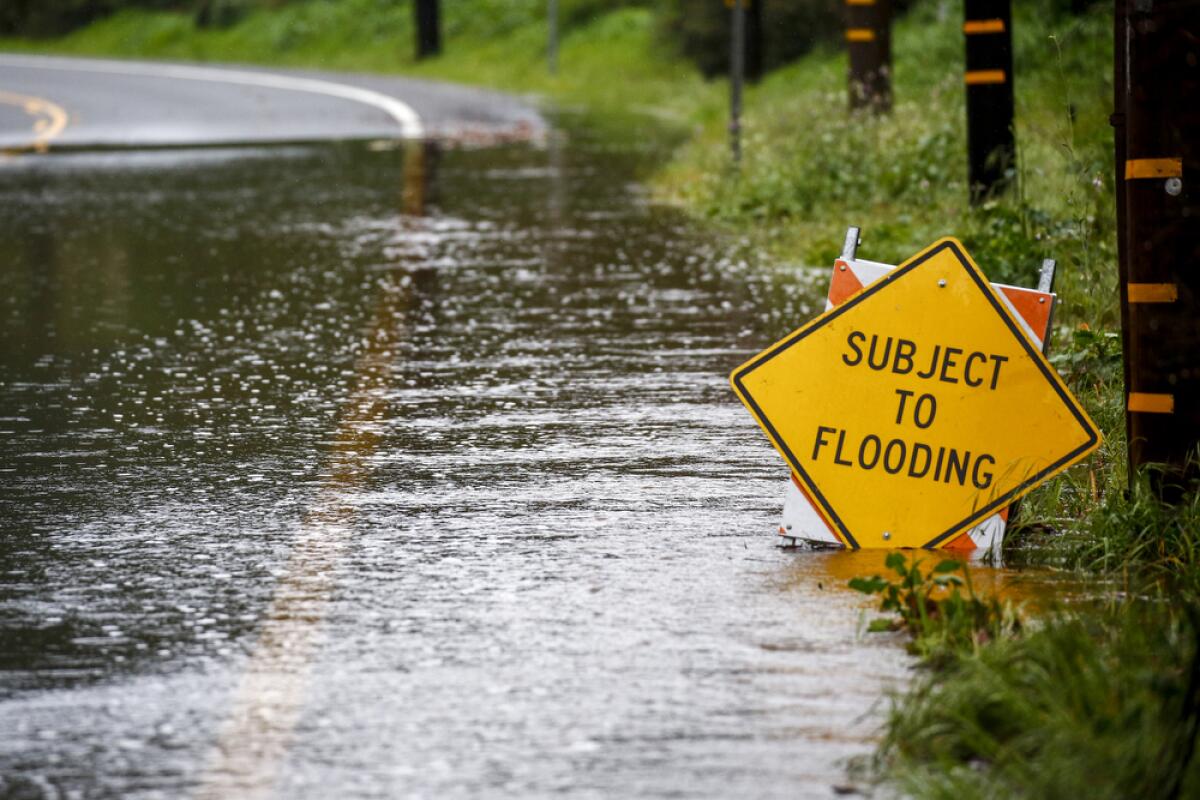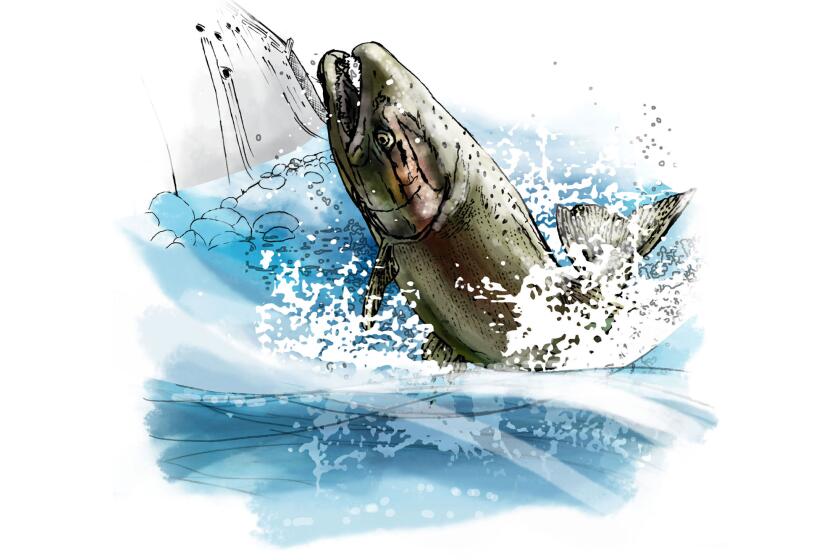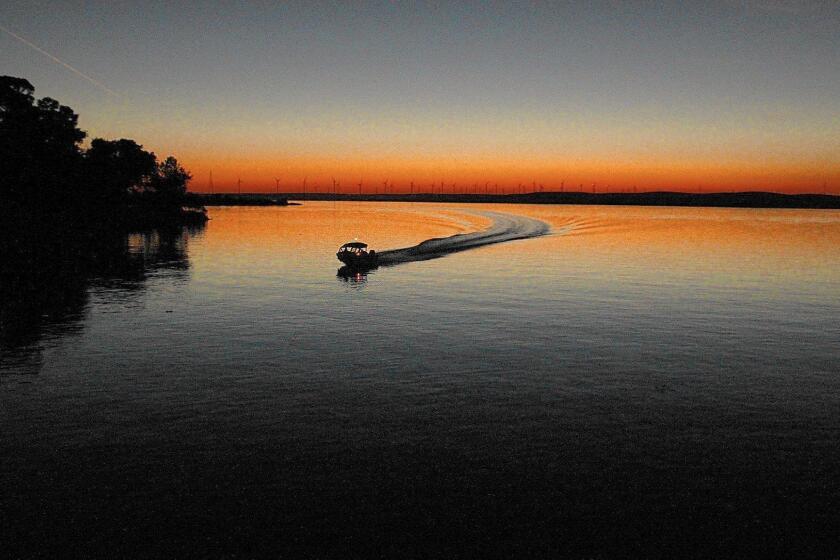California could shrink water use in cities by 30% or more, study finds

Green lawns, old appliances and leaky pipes all consume significant amounts of California’s water, and researchers have calculated in a new study that the state could reduce water use by more than 30% in cities and suburbs by investing in measures to use water more efficiently.
The study by the Pacific Institute, a water think tank in Oakland, also found big untapped potential for urban areas to reduce strains on overused rivers and aquifers by investing in local projects to recycle more wastewater and capture more stormwater. While the researchers determined large water-savings could be achieved throughout the state, they said the biggest potential lies in Southern California for reducing water use indoors and outdoors, reusing treated wastewater and collecting more runoff when it rains.
“California has made real progress in recent years to reduce water use and augment local water supplies,” said Heather Cooley, the institute’s research director. “Without those past efforts, our water challenges would be even more severe. But more is needed in the face of climate change and drought.”
California went through an extreme drought from 2012 to 2016 and is now in the third year of a drought that ranks among the worst on record. Across the West, research has shown that droughts are becoming more intense with the heating of the planet caused by the burning of fossil fuels.
As dams and global warming push endangered California salmon to the brink, a rescue plan is taking shape — and a tribe pushes for recovering their sacred fish.
The state’s total urban water use is estimated at 6.6 million acre-feet per year. The study found that a host of existing technologies and standard practices could improve efficiency to reduce total urban use between 30% and 48%. These efficiency measures include fixing leaks in water pipes, replacing inefficient washing machines and toilets, and replacing lawns with plants suited to California’s dry climate, among other things.
The researchers estimated that California has the potential to substantially boost local water supplies by capturing stormwater and storing it in aquifers, instead of allowing it to run off the landscape. Depending on whether it’s a dry year or a wet year, they said, the state could capture between 580,000 and 3 million acre-feet of stormwater in urban areas.
California now recycles about 23% of its municipal wastewater, an estimated 728,000 acre-feet, the report said, and has the potential to more than triple the amount that is recycled and reused.
If these strategies are rapidly scaled up throughout the state, Cooley said, “millions more Californians could see short-term drought relief and longer-term improvements in the reliability of their water supplies.”
In the report, which was released Tuesday, Cooley and her colleagues cited several examples of water-saving projects and programs that they said can be models.
Among them, the Pure Water Monterey project treats wastewater and stormwater runoff to use for replenishing groundwater. In Fresno, the flood control district operates stormwater retention basins. Long Beach has a pilot program that provides water-efficient landscaping to homeowners in low-income neighborhoods. And San Francisco has an ordinance that requires high-efficiency plumbing fixtures to be installed when a home is sold.
The study’s authors said they found the biggest water-saving potential in the South Coast region of Southern California, which includes Los Angeles and San Diego, in large part because it’s home to more than half the state’s population, but also because it has lots of outdoor landscaping, a hotter climate than the Bay Area, a large quantity of wastewater and many areas where stormwater could be captured.
They said the opportunities vary by region. For example, 29% of wastewater effluent is now reused in the South Coast region, while only 9% of wastewater is recycled in the Bay Area.
The strategies outlined in the report can help California become more resilient to a more extreme and uncertain climate, Cooley said, and can also help inform water management decisions in other parts of the United States and the world.
Even as a Yurok tribe releases California condors on tribal lands, wind farms pose a new threat to the critically endangered species.
While the study didn’t analyze the potential costs, the authors pointed out that the recommended solutions also have other benefits, such as reducing flood risks, helping fragile aquatic ecosystems, curbing the discharge of treated wastewater into the ocean, and reducing the amount of energy used to pump and transport water.
“These strategies are proven, they’re cost effective, and they can provide water supply reliability,” Cooley said.
The study did not examine the relative costs of infrastructure projects such as dams or desalination plants.
“We know we have to invest money to deal with California’s water problems. And investing in these options is going to be cheaper and more effective and quicker than investing in the traditional things that we’ve done statewide in the past,” said Peter Gleick, the Pacific Institute’s co-founder and president emeritus.
As for desalination, Gleick said, the team didn’t consider it in the study because although it has the potential to supply large quantities of water, “it’s incredibly expensive, it’s energy intensive, it has environmental liabilities.”
California officials are touting a $2.6-billion deal to boost the health of a vital watershed, but environmentalists are calling it a backroom scheme.
While proposals for new dams are debated for their economic costs and viability, Gleick said, the total water-storing potential of the proposed dam projects that are most plausible “is nowhere near the volumes of water that we’re talking about here.”
The study notes that Californians have made major progress cutting water usage. The state’s total urban water use peaked in 2007 at about 10 million acre-feet per year, and has since declined to less than 7 million acre-feet per year.
The researchers said stepping up water-efficiency strategies could help redouble those savings over the long term. They didn’t look at short-term drought conservation efforts, such as taking shorter showers or letting lawns go brown.
“What we looked at was proven technologies and practices that can reduce water use,” Gleick said.
The research team used data submitted to the state by water suppliers to calculate current use, and then calculated scenarios based on moderate efficiency improvements and high efficiency improvements.
The high-efficiency estimate would entail people removing lawns and putting in low-water-use plants. While there are large water-saving opportunities in outdoor water use, the report says, there are also ways to dramatically cut back indoors.
Gleick shared a personal example from his home. A few years ago, he replaced his old 6-gallon-per-flush toilets with new toilets that met the efficient standards at the time, and used 1.6 gallons per flush. Now the current standard has come down further to less than 1.3 gallons per flush.
“If I were to replace my own toilets to the current standard, I would achieve even more indoor savings than I’ve achieved already,” Gleick said. “And there’s that kind of sort of turnover of appliances, turnover of fixtures, turnover of housing stock, that is part of this untapped potential.”
He said the findings show that California, even after gains in recent years, still has enormous potential to become more water-efficient and boost local water supplies, and should pursue this quickly as the state faces increasing severe droughts and damaging climate change.
The researchers offered a list of recommendations for water suppliers as well as local, state and federal agencies to implement water-saving strategies and increase funding for efforts such as customer rebate programs and water recycling projects.
The study focused on urban water use and didn’t examine agriculture, which on average accounts for about 80% of the water that’s put to human use in California.
“Agriculture has already seen cutbacks because of shortages of surface water,” Gleick said. “They’re already making changes in crop types. They’re already improving irrigation efficiency, by changing irrigation technology. There is still enormous untapped potential in agriculture. And it needs to be addressed.”
He added that the fact agriculture has the potential to use much less shouldn’t diminish the importance of doing “smart cost-effective things in every sector,” including cities and communities across the state.
More to Read
Sign up for Essential California
The most important California stories and recommendations in your inbox every morning.
You may occasionally receive promotional content from the Los Angeles Times.














